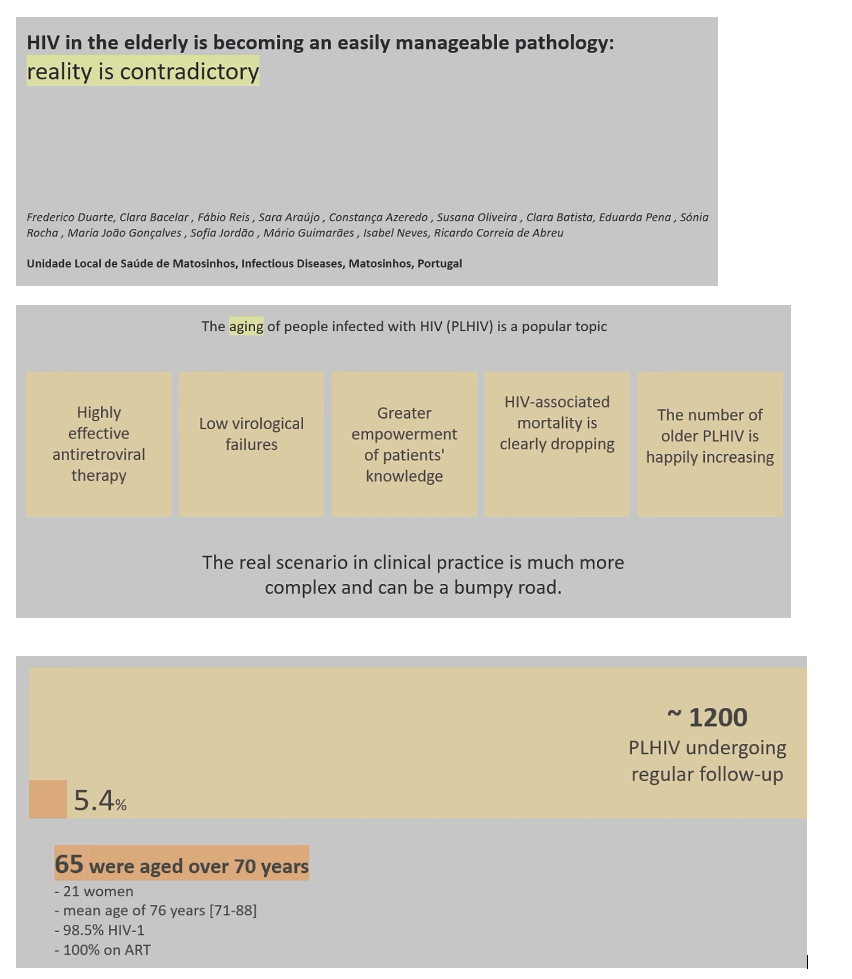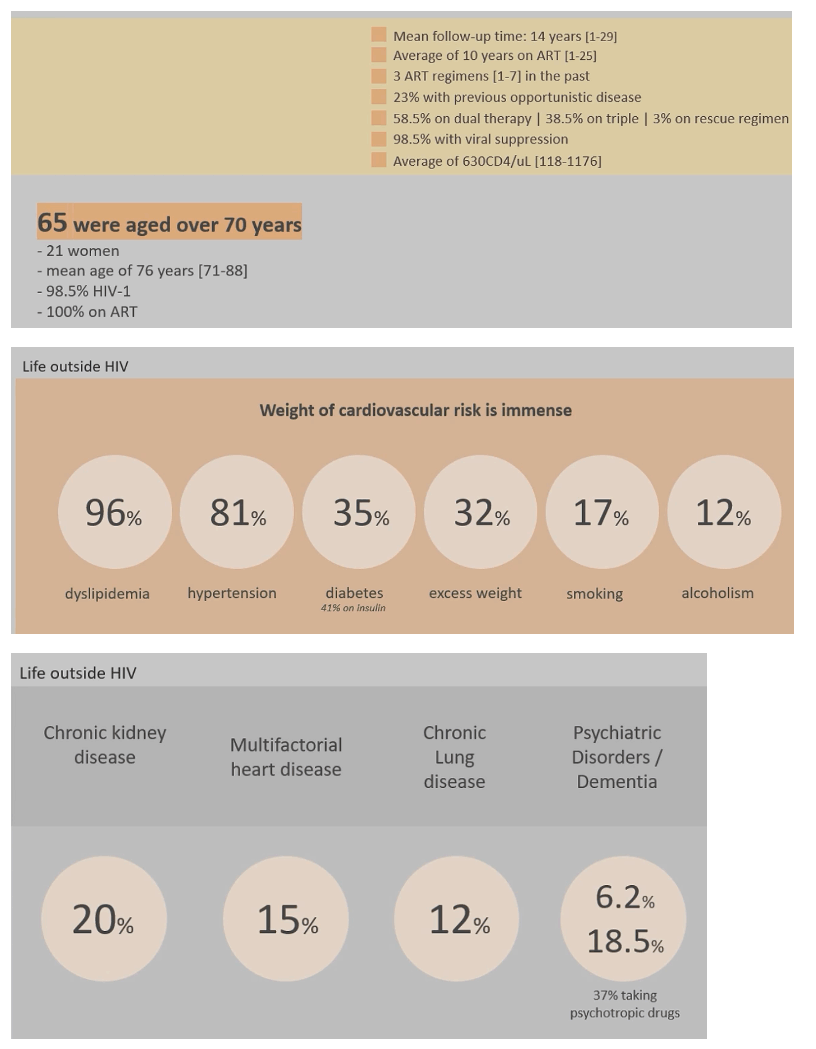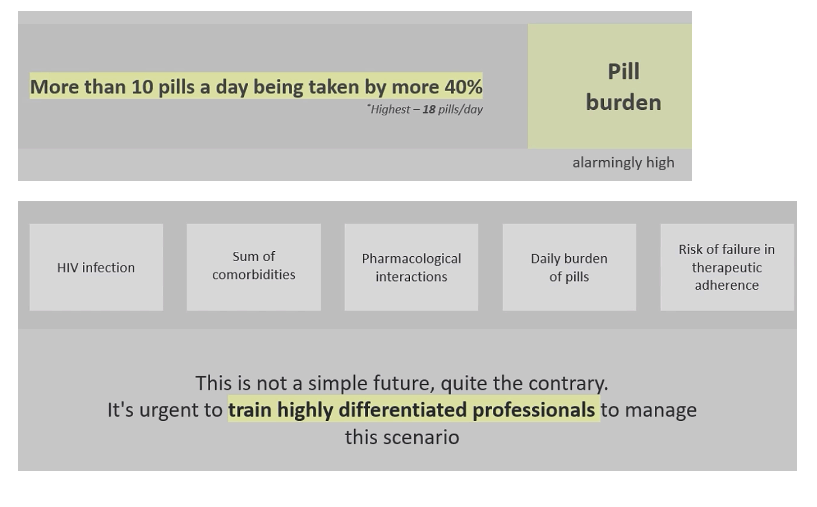 |
 |
 |
| |
HIV in the elderly is becoming an easily manageable pathology:
reality is contradictory. Much More Complex
|
| |
| |
EACS 2023
F. Duarte1, C. Bacelar1, F. Reis1, S. Araújo1, C. Azeredo1, S. Oliveira1, C. Batista1, E. Pena1, S. Rocha1, M.J. Gonçalves1, S. Jordão1, M. Guimarães1, I. Neves1, R. Correia de Abreu1
1Unidade Local de Saúde de Matosinhos, Hospital Pedro Hispano, Infectious Diseases, Matosinhos, Portugal
"the real scenario seen in clinical practice is much more complex, and managing patients infected for decades at a very high age can be a bumpy road."
Abstract
Purpose: The aging of HIV-infected patients is a popular topic. With effective antiretroviral therapy (ART), decreased virological failures, greater empowerment of patients' knowledge, early mortality associated with the disease is clearly dropping. But the real scenario seen in clinical practice is much more complex, and managing patients infected for decades at a very high age can be a bumpy road.
Method: The authors objectify the real scenario of HIV-infected patients, in regular follow-up, aged over 70, regarding comorbidities, history of opportunistic disease, ART and the difficult pharmacological puzzle that each one of them manages.
Results: Of a total of 1247 HIV-infected patients undergoing regular follow-up, 65 were aged over 70 years (21 women): mean age of 76 years [71-88], 98.5% HIV-1. Mean follow-up time: 14 years [1-29]; average of 10 years on ART [1-25], 3 ART regimens [1-7] in the past; 23% with previous opportunistic disease; 100% on ART (58.5% on dual therapy, 38.5% on triple, 3% on rescue regimen), 98.5% with viral suppression and an average of 630CD4/uL [118-1176].
The weight of cardiovascular risk factors is immense [dyslipidemia in 96%, hypertension 81%, diabetes 35% (41% on insulin), excess weight 32% (including obesity), smoking 17%, alcoholism 12%], but also chronic kidney disease (20%), multifactorial heart disease (15.4%), pulmonary illness (9.2%), psychiatric disorders (6.2%) and some degree of dementia (18.5%) - 37% of these last two groups taking daily psychotropic drugs. The average number of daily pills is alarmingly high, with more than 10 pills a day being taken by more 40% of the studied sample.
Conclusions: The sum of comorbidities, pharmacological interactions, daily burden of pills, in elderly HIV-infected patients, with increasing potential for dementia at greater risk of failure in therapeutic adherence does not translate into a simple future, quite the contrary. It's urgent to train highly differentiated professionals to manage these patients.



|
| |
|
 |
 |
|
|